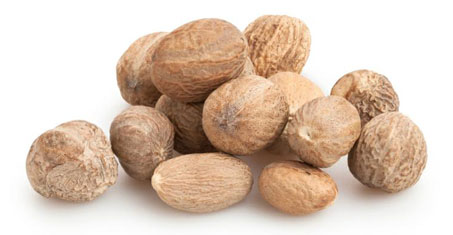What Is Nutmeg?

Nutmeg and mace come from the same plant. Nutmeg is the ‘nut’, while mace is the surrounding lacy ‘aril’. Nutmeg has a warm, spicy aroma and flavour and can be used in sweet and savoury cooking. Nutmeg is actually a fruit with a single seed (which makes it a drupe), similar in size to an apricot. It's intertwined, one might say, with a softer substance: mace, another valuable spice harvested at the same time.
Nutmeg Plant and Cultivation
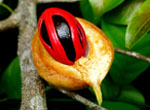
Nutmeg thrives weII in warm humid conditions in Iocations with an annuaI rainfaII of 150 cm and more. It grows weII up to about 1300 m above mean sea IeveI. Areas with cIay Ioam, sandy Ioam and red Iaterite soiIs are ideaI for its growth. Both dry cIimate and water Iogged conditions are not suitabIe for nutmeg cuItivation.
Nutmeg Description
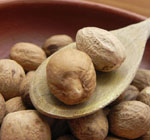
Nutmeg is the seed of the tree, roughly egg-shaped and about 20 to 30 mm (0.8 to 1.2 in) long and 15 to 18 mm (0.6 to 0.7 in) wide, and weighing between 5 and 10 g (0.2 and 0.4 oz) dried, while mace is the dried "lacy" reddish covering or aril of the seed. The first harvest of nutmeg trees takes place 7–9 years after planting, and the trees reach full production after twenty years. Nutmeg is usually used in powdered form. This is the only tropical fruit that is the source of two different spices, obtained from different parts of the plant.
Uses of Nutmeg

Nutmeg is used in both Western and Chinese herbal medicine. It is most popular as a spice in food and drinks, and is also used in cosmetics and soaps. Nutmeg oil is used in perfumes and ointments. In ancient Greece and Rome, where nutmeg was rare and expensive, people thought it stimulated the brain.
10 Health Benefits of Nutmeg
1 - Brain Tonic - During ancient times, Roman and Greek civilizations used nutmeg as a type of brain tonic. This is because nutmeg can effectively stimulate your brain. As a result, it can help eliminate fatigue and stress. If you are suffering from anxiety or depression, nutmeg may also be a good remedy.
2 - Pain Relief - Nutmeg is also an effective sedative. In fact, nutmeg is a staple in ancient Chinese medicine. The Chinese used the spice to treat inflammation and abdominal pain. Use nutmeg if you are suffering from aching joints, muscle pain, arthritis, sores and other ailments. To relieve the pain, apply nutmeg oil to the affected areas.
3 - Indigestion Relief - If you suffer from digestion-related problems like diarrhea, constipation, bloating, flatulence and so on, nutmeg can effectively offer you relief. Nutmeg oil relieves stomachaches by removing the excess gas from your intestines. Nutmeg can also boost your appetite.
4 - Bad Breath Treatment - Because of its antibacterial properties, nutmeg can also effectively treat halitosis or bad breath. Nutmeg can also be used to treat gum problems and toothaches.
5 - Liver and Kidney Detox - Nutmeg can clean your liver and kidney and remove these toxins. If you are suffering from a liver disease then nutmeg can also be beneficial. Nutmeg is also effective in preventing and dissolving kidney stones.
6 - Skin Care - Nutmeg can actually help you achieve smoother and healthier skin by helping you treat several skin problems. If you suffer from acne marks, nutmeg can also help make your scars less noticeable.
7 - Sleep Aid - If you have difficulty sleeping at night, drink a cup of milk with some nutmeg powder. This will help you achieve relaxation and will induce sleep.
8 - Helps relieve tooth pain - Nutmeg oil on the gums may help reduce tooth aches and sore gums, say experts.
9 - Leukemia - Research indicates that a particular methanolic compound in nutmeg and its essential oil can in fact stimulate cell death (apoptosis) in leukemia cells, therefore stopping multiplication and metastasis of this terrible variety of cancer that generally afflicts children.
10 - Blood Pressure and Circulation - The mineral content of nutmeg implies that it really is useful for terms of maintaining organ function. Potassium is really a vasodilator, that relaxes blood vessels, therefore decreasing blood pressure as well as decreasing the strain on the cardiovascular system.
Producing Countries of Nutmeg
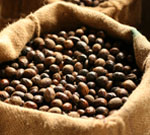
World production of nutmeg is estimated to average between 10,000 and 12,000 tonnes per year, with annual world demand estimated at 9,000 tonnes. Indonesia and Grenada dominate production and exports of both products, with world market shares of 75% and 20%, respectively. Other producers include India, Malaysia (especially Penang, where the trees grow wild within untamed areas), Papua New Guinea, Sri Lanka, and Caribbean islands, such as St. Vincent.
Consuming Countries of Nutmeg

The main import markets of nutmeg are the European Community, the United States, Japan, and India. United States, accounting for around 50% of total global imports, followed by the United Kingdom with approximately 10%. Singapore and the Netherlands are major re-exporters. Grenada produces the West Indian variety which is milder in flavor and lighter in colour. International trade in nutmegs is either of the East Indian variety or the West Indian variety, with a negligible quantity of wild 'Bombay' nutmegs imported by the United States.
Recipe for Beverages with Nutmeg
Eggnog
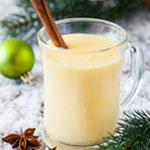
Ingredients: A: 4 egg yolks B: 2 cups of milk C: 1 cup of cream D: ½ cup of sugar E: 1 teaspoon of vanilla extract F: 1 teaspoon of freshly grated nutmeg G: 2 whole cloves H: Pinch of cinnamon I: (Adult option – 2 tablespoons of your favorite bourbon)
Preparation MethodA: Mix the egg yolks and slowly add the sugar until light and fluffy. B: In a separate pan combine the cloves, cinnamon and milk until simmering. C: Slowly add the milk mixture into the egg mixture whisking constantly. Then pour back into the pan and heat on a medium heat, stirring the mixture until it begins to thicken. D: Once suitably thickened, remove from the heat and stir in the cream. Strain the mixture to remove the cloves and let it cool. Once cooled, stir in the nutmeg and vanilla extract (add the bourbon now if you like).
Recipe for Cooking with Nutmeg
Kedgeree
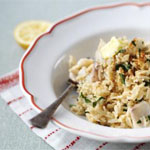
Ingredients: A: ½ onion, finely chopped B: 55g/2oz butter C: 300g/10½oz basmati rice D: 1 tsp madras curry powder E: freshly grated nutmeg F: 200ml/7fl oz milk G: 110ml/4fl oz double cream H: 300g/10½oz naturally smoked haddock I: sea salt and cracked black pepper J: small bunch parsley, chopped K: 3 hard-boiled eggs, shelled and halved L: good pinch cayenne and freshly ground nutmeg M: knob of butter N: wedges of lemon
Preparation MethodA: Cook the onion gently in the butter for a few minutes, then add the rice. B: Continue cooking gently and stirring, adding the curry powder and nutmeg. After a few minutes, add the milk, cream and 250ml/9fl oz water. C: When the mixture begins to simmer, add the fish and continue simmering, stirring occasionally until the rice is cooked. (You may need to add a little water if the mixture becomes dry.) D: Season, add the parsley and stir. Add the eggs and garnish with cayenne and nutmeg if using. Serve topped with a knob of butter and wedges of lemon.
Recipe for Dessert with Nutmeg
Steamed Nutmeg Flan
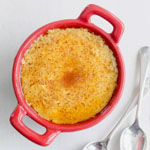
Ingredients: A: 1½ cups (375 ml) whole milk B: ½ cup half and half (10% cream) or heavy cream C: 3 eggs D: ½ cup sugar, divided E: ½ nutmeg F: ½ cup water, divided
Preparation MethodA: Place the milk and cream in a large bowl, and stir in ¼ cup sugar. Whisk gently, until the sugar dissolves. Add the eggs, and beat until creamy. B: Grate about 1 teaspoon of fresh nutmeg into this mixture, and whisk well. Pour into a heatproof glass pie dish (or into 4 ramekins). C: Place a heatproof trivet in a large pot, and place the pie dish or ramekins on top. Gently pour in enough boiling water, so it just touches the bottom of the pie dish. Cover the pot with a tight fitting lid, and steam the flan for 30 minutes, until it is set, but with a wobbly middle. D: While the flan is steaming, make the caramel syrup. Place the remaining sugar in a heavy based pan, and gently sprinkle over the ¼ cup water. Place on a medium heat, and simmer gently until the sugar melts into a sticky golden brown caramel (watch it carefully and don't let it burn). Take off the heat and stir in the remaining water, until you have a thin, caramelly syrup. E: When the flan is done, gently run a sharp knife around the edges. Pour in the caramel syrup around the edges, so the flan is soaked in the syrup. F: Serve the flan warm, at room temperature or chilled

